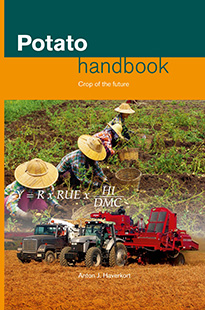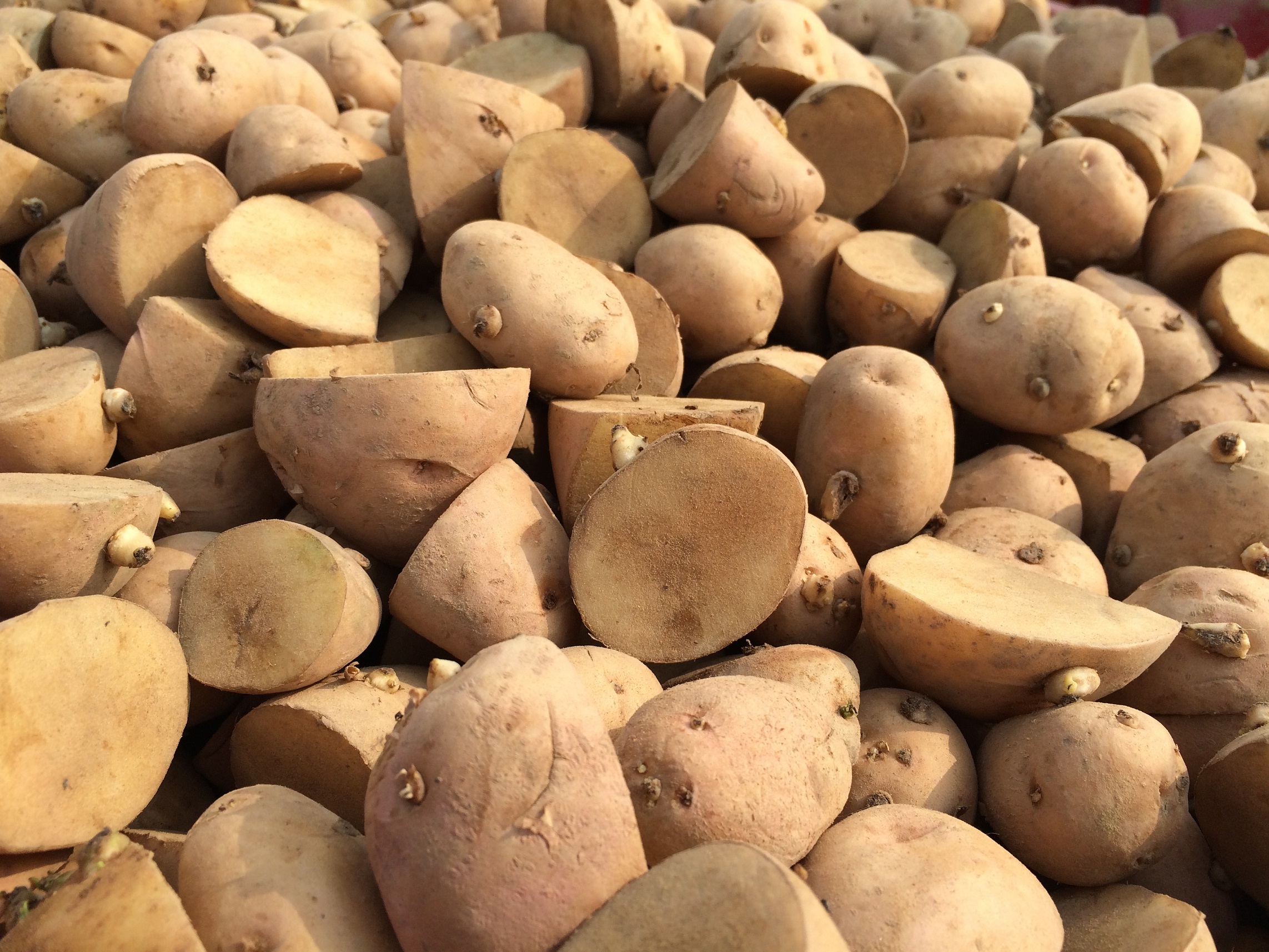Already a subscriber? Activate your premium account

Potato Handbook

The seed tuber as propagation material of the potato plant is determined by, amongst other things, its size and age. The amount of seed planted per hectare depends on several distinct factors.
Crops destined for seed are planted at a higher rate to achieve full ground cover earlier in the season. The reason is to avoid tubers growing too large, as relatively small-sized tubers are wanted as seed since they fetch a higher price per unit weight, which is another reason for a premature harvest of the seed potato crop. Besides, growers in risky growing environments apply higher seed rates through larger seeds than in temperate climates with few weather risks. This is because crops from such seed amounts are better able to withstand adverse soil conditions and recover more adequately after crop damage following frost or hail. Applying larger tubers but the same number per m2 leads to more stems per tuber. Although they produce fewer tubers per stem, larger seed tubers still lead to more tubers per plant and thus to a lower average weight of the tubers of the resulting ware crop.
Crop maturity
When tubers are initiated at the potato plant they are unable to sprout until the time they grow to full size. Only favorable cool and moist weather conditions following a dry and hot spell induce sprouting of tubers on a growing crop. This is one of the phenomena of secondary growth. When harvested at crop maturity, it takes anywhere between one and some five months for the tubers to sprout. Long dormancy variety characteristics, more immature tubers at the moment of harvest (meaning harvesting earlier than the foliage dies naturally) and lower storage temperatures lengthen the time between harvest of the seed and the appearance of sprouts.
Events
©2015 - 2024 Potatoworld | Webdesign and realisation COMMPRO